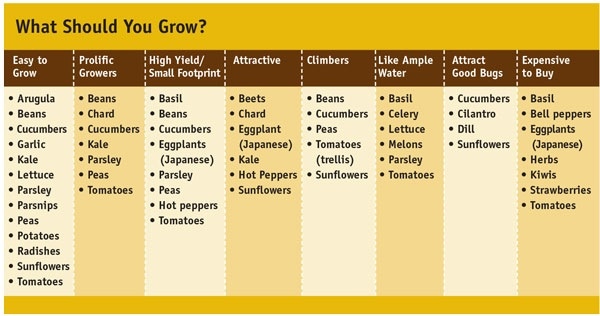Project 13: Community Gardening
Why would you want to do this? You want to grow your own food, but you either don’t have any available gardening space or you don’t want to devote any of your own space to a garden.
Why wouldn’t you want to do this? You have your own garden, you don’t want to commit to tending a garden that’s not on your property, or you just don’t want to grow things.
Skills needed: Just willingness and energy!
Learn more about it: Get involved! Talk to the administrator of your community garden to find out about gardening classes or Master Gardener programs. Walk around your community garden to look at what other people have done. Ask other community gardeners what works—and what doesn’t—for them. There is a wonderful children’s book called Seedfolks (HarperTrophy, 2004), by Paul Fleischman, which tells the story of how a vacant lot became a community garden and how working on the garden united the community and turned a troubled area into an oasis of sorts.

Community gardens offer urban dwellers without gardening space the opportunity to grow their own food in a communal setup. If you’re interested in community gardening and you have the chance to participate, don’t pass it up—there are probably many people waiting for a spot. So what are the best plants to grow in the limited space provided?
If you are reading this, chances are that you either want a community garden plot or have recently gotten one and are trying to decide what to grow. One of the great things about community gardens is the first part of the name: community. Community gardening is a great way to begin gardening and to learn through both hands-on experience and the collective knowledge of the other gardeners out there. Many people I know have gone from newbies to expert gardeners just from what they’ve learned, seen, and experienced by participating in community gardens.
Community gardens are wonderful. In our city, there are currently thirty-eight of them that offer 1,200 plots and have approximately 3,000 people working them. Each of our community gardens has a substantial waiting list for plots as they become available.
Most cities with community-gardening programs have guidelines about what you are allowed and not allowed to grow in the community plots. Generally prohibited are prolific or spreading plants, such as mint, comfrey, lemon balm, bronze fennel, or other invasive species, that would take over the entire area. For practical reasons, there are other plants that just don’t make sense to grow in an average community garden plot.
I spoke to some community gardeners and got their tips on what to grow in a community plot.

Willingness to put in the required labor is a key factor in community-gardening success.
Advice from Community Gardeners
Gardener A: First off, grow the things you really like—or learn to really like the things you grow.
Gardener C: Try to grow things that don’t take up a lot of space but can yield a lot, such as peas, beans, or cucumbers. Climbing [plants] are great because they take up minimal square footage and can be trellised to make use of the air space too. Root vegetables and greens are good for the smaller space they take up. Don’t try things that require a lot of space (for example, zucchini or corn) for relatively little reward—unless you really love it.
Gardener A: Space considerations do preclude [plants] such as corn, but we’ve done it occasionally. We like the perennials and things that seed themselves, such as chard—it is great to walk in with a knife and come back out with greens for the skillet.
Gardener B: Because space is limited, I think it is worth learning more about vertical gardening and talking with neighbors about trades of seeds or harvest.
Gardener A: I think that economically it makes sense to grow the things that are expensive to buy, such as raspberries, and to buy the things that are cheaper, such as potatoes and onions.
Gardener B: In Portland, community-garden rental is a flat rate with no extra fee for water usage. So while space is limited and I wouldn’t do watermelons, I would do smaller thirsty crops such as melons, berries, and tomatoes because I won’t get charged for the water. (Check your own garden’s policies and fees.)
Gardener C: Put in [plants] that can give you fairly fast turnaround so you don’t spend years waiting for your first harvest only to decide to leave the plot just as long-term plants, like asparagus or rhubarb, are maturing.
Gardener A: As far as [plants] that take time to establish, such as asparagus, it depends on how long you plan to have the plot and how much space you want to dedicate to one crop. We have rhubarb and raspberries as anchor plants, but most of the rest of the footage is flexible.
Gardener B: If you live close to your garden, grow things that can be picked fresh each day—herbs, berries, salad greens. If you live farther [away], grow rare versions of things that hold, such as an heirloom potato you might love but would never find in the market, green beans that can hold for several days when ready, or hardy greens such as kale and chard.
Gardener A: Always plant tomatoes because there is nothing like a BLT in August or September—best sandwich of the year!


A community garden in bloom with flowers and greens.